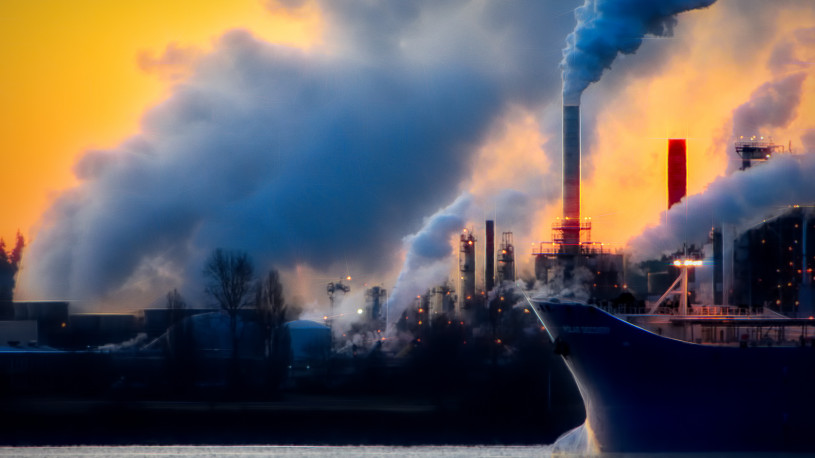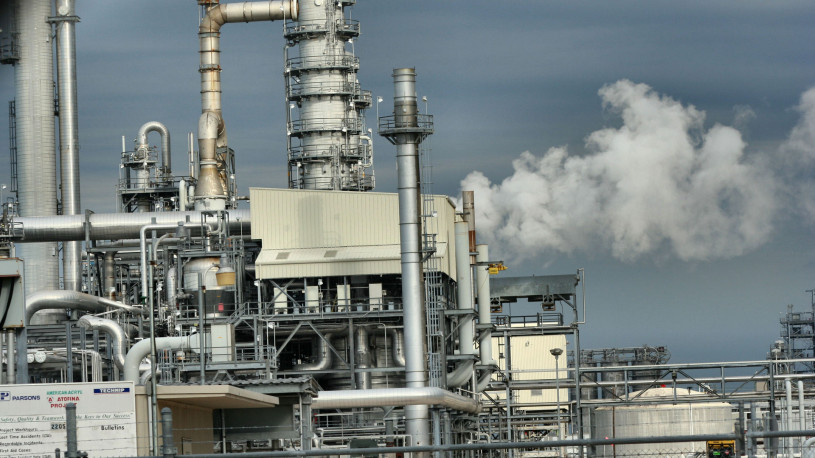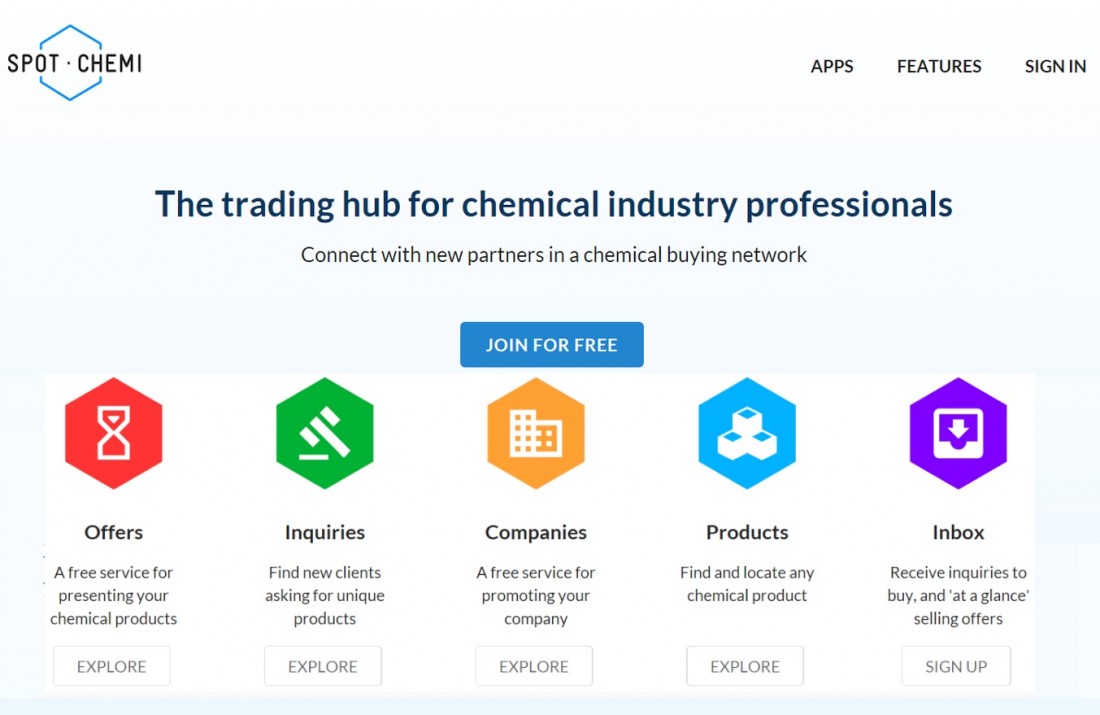-
Start-Ups Offer Insights on Industrial Raw Material Markets
 Continue Reading
Continue ReadingA few weeks ago, at the end of February, Bloomberg published an informative article about a commodities trading company called SourceSage. The story was insightful because it told of the unlikely team behind a Singapore raw materials trading company.
As the authors described, “Co-founder Jianmin (Jian) Sim, 29, has all the hallmarks of the young entrepreneur — a former machine-learning researcher with a Masters in engineering from Oxford University. His partner, though, is his father, 63-year-old John Sim, who has three decades of experience buying and selling commodities.”
It was also interesting because of their amazing growth in commodity trading markets. An expanding company with over 10,000 clients, including Cargill Inc. and Wilmar International Ltd., in 102 countries.
But while there have been plenty of family-run trading companies from Singapore, many of whom have found great success, what was truly inspiring was the founders’ vision. A father and son team with a plan to re-write the rules of trading for industrial raw materials. As Paul Santos, managing partner at Wavemaker Partners, which has invested in SourceSage, says, “They had a conviction that this industry was really messed up and needed a transformation.”
The industry journal, The Edge Markets, agrees, noting that, “Many physical commodities markets are ripe for disruption using technology. Unlike stocks, where prices are typically determined on highly regulated exchanges, most niche commodities have dodged intense regulatory scrutiny because of their relatively smaller value and the wide geographical spread between production, shipping, processing and end users.”
If you are interested in reading more about industrial raw material markets, chemical prices, and feedstock sourcing, then please take a look at the SPOTCHEMI blog page.
Seeing the advantages available for tech-savvy raw material traders, the team began to combine the commodities trading knowledge of father John, with son Jian’s understanding of the latest technology and communication techniques.
“Once he retires, his knowledge would be gone forever,’’ explains Jian. “I wanted to capture that, digitize it, and immortalize John Sim as a brand.’’
In doing so, the business has found a growing market for providing data and pricing information in a huge industry sector.
As the Nikkei Asian Review explains, “The Singapore start up gathers and verifies commodity prices from online and offline sources and distributes real-time data as well as weekly market analysis via its app, website and terminal. Chat-bot Amanda helps users navigate the app. They can search data on chemicals, oil & fats, oleochemicals, petrochemicals, freight & logistics and steel & iron ore, the app show.”
“It’s a robust technology platform that’s user-friendly and easy to navigate,” said Sathia Varqa, co-founder of news and data publisher Palm Oil Analytics, who uses the app daily to reach SourceSage’s palm-oil related community.
Neither father or son had originally planned to go into business together. When Jian was growing up, John’s work commitments prevented them from spending much time together, especially as Jian was often studying overseas. Then one day in 2013, John asked his son to set up a website for his trading company. The question came quite ‘out of the blue’, but was the beginning of a beautiful working relationship.
As Bloomberg explains, “John scribbled his workflow on a piece of cardboard and passed it to his son. They began talking about the pain points in the industry — how nice it would be to have cheap, reliable, real-time data, and a platform for buyers and sellers.”
Today, after just a small $50,000 start-up investment, SourceSage has grown to be a ‘go-to’ business for commodity traders, and a well-known supplier of information on Far East raw material prices.
Today, SourceSage is not alone in supplying an online hub for raw material buyers and sellers. SPOTCHEMI (who support this article) is an online community of chemical industry professionals. Through the company’s website, raw material manufacturers, suppliers, and traders keep up to date on news, price fluctuations, and market trends. The website also offers a product sourcing service, product promotion tool, and provides a general platform for networking among like-minded chemical professionals.
While the speedy expansion at SourceSage is to be commended, it is just one of several start-ups who have seen for reform in raw material markets. The need for ‘real-time’, international data on prices is modernising the sourcing and supplying of industrial raw materials. Given the advantages offered to those who use information hubs and online buying networks, those who ignore progress are sure to be left behind.
Photo credit: Wei Leng Tay/Bloomberg, LeHarvePort, ACI, SPOTCHEMI & NNZ
-
Is Openness the Best Approach for Industrial Chemical Pricing?
 Continue Reading
Continue Reading007 would be proud of the chemical industry. Although it doesn’t have car chases, glamourous locations, and seductive women, it does keep a lot of secrets. And in the highly secretive market of industrial chemicals the biggest secret of all is the price.
In most situations this leads chemical manufacturers and traders to ‘best guess’ their opening offer to prospective clients. Without additional information, a chemical sales team can only create offers based on past experience and hunches. It can never know what the true value of the chemical product is to the customer.
However, a more modern approach to pricing industrial chemicals has now been developed that suggests having a more open discussion about price. It even suggests that the value of a chemical should be based on a calculatable evaluation of the practical solution a chemical product provides.
The details of this theory by Dr Andrea Maessen (formerly at the Department of Trade and Marketing at the University of Hamburg) and Jan Haemer (formerly at the Department of Economics at the University of Toronto), have now been published in the industrial chemical journal, Business Chemistry. Their work at the industrial consultancy Simon-Kucher & Partners offers a great insight into the theory of pricing industrial chemicals.
Pricing theory that is also pleasingly practical.
For example, Maessen and Haemer have provided real-world examples of how their theory was applied in advice to the water specialists at Ecolab . Here they suggest not pricing chemical products by the kilo or tonne, but by the value it provides to the customer. On this topic they note, “The added value is the ability to identify ways to operate a specific water treatment plant more effectively and efficiently on a continuous basis, based on gathered information and benchmarks. The value is derived from the solution, the combination of water chemicals and services. A model based on kg or bags of water chemicals doesn’t align with this value.”
They suggest that chemical companies are not just supplying products, they are supplying problem solving solutions. A manufacturer of animal feed gains value by adding agrichemicals to his mix. These chemical raw materials give value to his product that can be measured in the additional growth and productivity of a farmer’s animals. The value of these chemical products is therefore measurable, providing a base point for price negotiations.
However, as any chemical product provider knows, the real profit for supplying industrial chemicals can often be found in the additional services that are purchased. Maessen and Haemer also believe that chemical suppliers need to show the value of these services. In doing so they not only allow a client to select the value that suits them and their needs, but they also help both parties find a mutually agreeable price.
For this reason, the researchers have also developed further pricing suggestions that give value to the services that chemical suppliers offer.
Here are some of the take-away points of their theory:
- Treat services as products. This includes issuing services with a material number.
- Be clear about what the standard service includes. This way clients understand why they must pay for additional services.
- Include all services on the invoice. Enter a value of zero for those that are included in the standard service.
- Automatically charge for services. It is easier to take a charge off the invoice than to add it later.
- Avoid petty charges. The Ryanair business model does not apply in B2B industrial chemical markets.
- Don’t display a price for all services. Some services are so special they are only ‘available on request’.
- Use services and charges to influence customer behaviour. Increase charges on services that you may want to phase out, decrease charges on services that you want to promote or expand.
In recent years there has been much talk of ‘innovation’ as a driving force for the chemical industry. It is the power that focuses investment, creates new products, and solves the problems facing the modern world. However, innovation in pricing policy is perhaps even more important. As research costs become ever higher, health and safety testing of new products stretches into decades, and competition becomes ever stiffer, it is innovation towards accurate pricing that will increase profits for chemical companies.
As Maessen and Haemer note, “Innovations which can demonstrate true added value are the only way forward for the chemical industry. This also means business model innovation and not merely product and service innovation.”
Is it time to rethink your company’s approach to chemical pricing?
If you would like to read more about industrial chemicals and chemical pricing, then you can read more articles like this one at the SPOTCHEMI blog page.
Photo credit: Canadianbusinessadvocates , Artofmanliness , and Healthsystemmanagement
-
Top 5 Industrial Chemical Pricing Tips
 Continue Reading
Continue ReadingDespite rising global demand, the long-term trend in the competitive world of industrial chemicals has been downward pressure on prices. Increased competition has been an easy scapegoat for chemical sales teams, but logically, the significant increase in demand should have more than offset growing chemical supply.
So, what areas should chemical traders and sales teams focus on to maximise chemical product prices?
To help answer this question, chemical pricing specialists at industry consultancy Simon-Kucher & Partners conducted a survey of chemical suppliers to find out where new focus in chemical sales teams should be. The research concluding that, “The majority of the managers saw the most important improvement potential in establishing a value-selling culture.”
This posed a problem, however, as ‘value-selling’ has long been known as a technique for optimising price in chemical sales, and left the research team wondering what else could manufacturers do to optimise industrial chemical prices.
In a far-reaching study of chemical pricing strategy, Dr Andrea Maessen (formerly at the Department of Trade and Marketing at the University of Hamburg) and Jan Haemer (formerly at the Dept of Economics at the University of Toronto) outlined numerous ways that chemical companies can rethink their approach to pricing.
They have now published their findings in the Journal of Business Chemistry, in a report entitled ‘Value-Pricing in the Chemical Industry – Rebooted.’ Here they note that, “It’s time for companies to step back and reboot their thinking around value pricing.” Adding that, “The great news is that companies in all segments of the chemical industry have a lot to build on. Innovations which can demonstrate true added value are the only way forward for the chemical industry, if managers want to make value pricing finally work to their advantage. This also means business model innovation and not merely product and service innovation.”
Here follows an outline of their findings.
1. You can’t price without the ‘willingness-to-pay’ talk.
Chemical suppliers need to openly discuss with a customer what they are ‘willing to pay’. The researchers founded this idea on a hypothetical situation where a sales team knows the priorities of one of its customers. They are; firstly, superior quality consistency, secondly, technical support available on call, and finally, price.
As Maessen and Haemer note, “That is an ideal opportunity for value-selling. What implications would this information have on offer design, price positioning, and value communications? Knowing this separates the companies who can differentiate from the companies who merely compete.” Adding that, “The problem is that, so many companies never give themselves this opportunity. They never had the ‘willingness-to-pay’ talk with their customers. Without that talk, a pricing discussion during a sales call is like a pop quiz, a last-minute guessing game based on hunches or experience rather than knowing what this customer wants.”
2. Avoid rigid ‘One-size-fits-all’ solutions.
Many chemical sales teams offer only a handful of pricing policies, and as a result are in danger of losing ‘value added’ pricing. However, no two customers are the same, so why treat them the same?
As Maeseen and Haemer note, “In a recent consulting project for a coatings and adhesives producer, the client wanted to develop a customer segmentation in order to derive differentiated offerings. Their hypothesis was that they had two segments. The price sensitive segment would be best served with a ‘lean’ offer at a competitive price, without any value-added service. The value-seeking segment would be willing to pay a premium for a premium offer. Once in the box, the customer would receive either the lean or the premium offering.”
However, they believe that ‘pigeonholing’ customers in this way, prevents the from finding the value in price offers. Instead, in a situation like this, they recommend, “de-bundling the offer and using service fees as mark-ups on product prices in order to quantify the value and make the product and service value transparent to the customer.” Adding that, “[The] ultimate goal is to help customers self-select their segment, rather than selecting the segment for them and imposing a solution. Customers buy what they need and what meets their willingness or ability to pay. Providing them with options and letting them choose is how segmentation works best.”
3. Go beyond the traditional price metric.
Prices by kg, ton, or litre seldom reflect the true value of a product. Pricing by traditional units rarely reflects the true value of a product. To quote Peter Drucker, “Customers don’t buy products.” Instead, they buy the added value or the benefits that the product and the manufacturers provide. A monetization model needs to reflect added value, and if it is done correctly it can be a game changer and create a significant competitive advantage.
4. The pricing strategy: Pick the winning option.
Here the researchers advise giving customers options that enable each to find their own pay-point, and for the chemical supplier to maximise profit on each purchase.
As they note, “There are two basic options: price low for a penetration strategy or aim high for a skimming strategy. To make this decision a company needs to gather data on four pillars: value, price, cost, and volume. Understanding what customers are willing to pay, how the volume changes when you change the price, what potential competitive responses are, and how to react to them, is at the core here. The insights from this information shape the pricing strategy.” Adding that, “Our observation is that companies with well-defined pricing strategies are 40% more likely to capture their value potential than firms that don’t have them.”
5. Communicate the value in your chemical products and services.
Rather than explain how special a chemical coating is, better to communicate what the product does. For example, AkzoNobel used the line, ‘Shipping customers have achieved savings of up to 9% through improved ship fuel efficiency due to our recommendation of which coating to use’. Simple wording can let customers know the true added value of a chemical product.
While some of these 5 ideas, such as the ‘willingness to pay’ conversation, may sound unusual, it is simply part of the ‘reboot’ approach that is needed in many chemical companies.
As the survey by consultants at Simon-Kucher & Partners found, “almost three out of four new chemical products (72%) fail to achieve their profit targets. Furthermore, one in four companies does not have a single new product in their portfolio that has achieved its profit targets.”
With data like that, it is clear that many chemical manufacturers and sales teams are in need of a new approach to chemical product pricing. Many chemical traders focus on the economics of the chemical industry, but if Maeseen and Haemer are correct, then psychology is far more helpful. While these 5 tips may be rudimentary, they are heading in the right direction and that makes them an excellent place to start.
Photo credit: TheGreenage, PolyesterTime, Breakbulk, & AddCrazy



